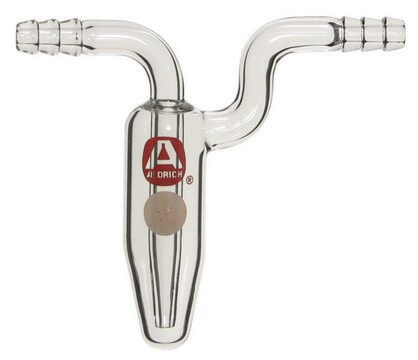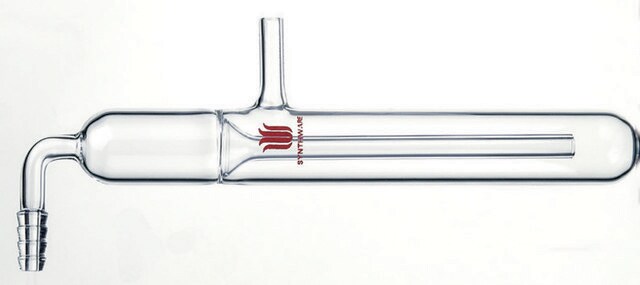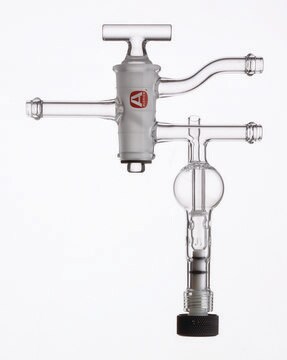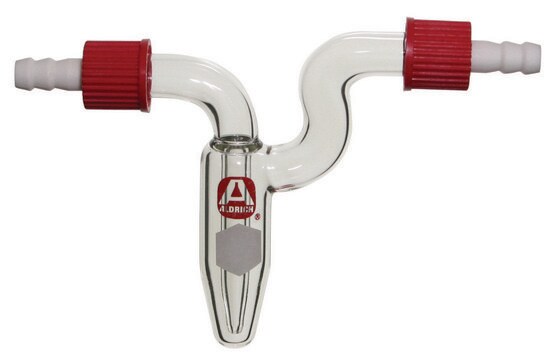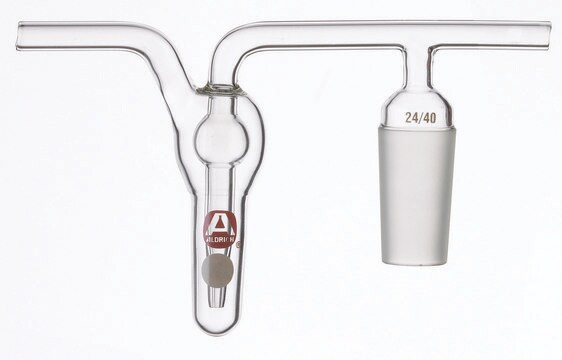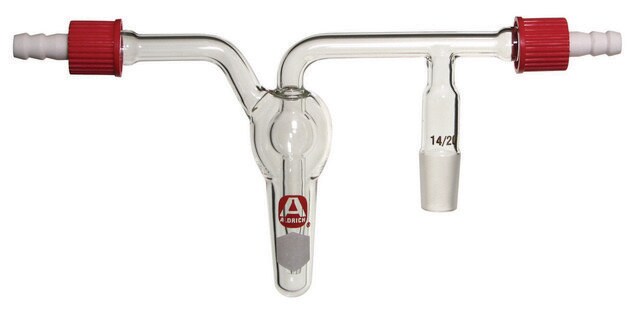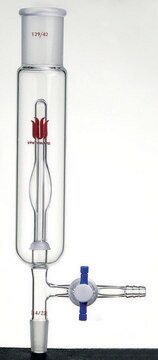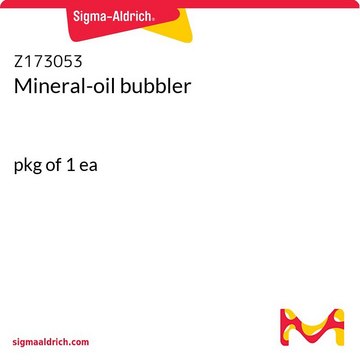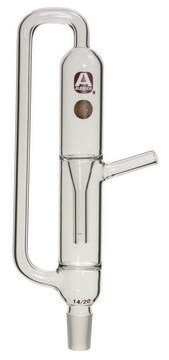Z225010
Aldrich® check-valve bubbler
single-inlet tube, top outlet
Synonyme(s) :
bubblers, scientific bubblers
Se connecterpour consulter vos tarifs contractuels et ceux de votre entreprise/organisme
About This Item
Code UNSPSC :
41121800
Nomenclature NACRES :
NB.43
Produits recommandés
Capacité
15 mL
Vous recherchez des produits similaires ? Visite Guide de comparaison des produits
Description générale
Filling
Position the bubbler on it′s side with the left hose barb (as shown in the drawing) pointing straight up, then pipette 15 mL of oil through the hose barb into the bubbler reservoir. Position bubbler vertically as shown in drawing and it is ready to use.
Principal of operation
Gas enters the bubbler from the hose barb on the right and flows through the bubbler, exiting at the left. The gas pressure unseats the check-valve ball to release the pressure, bubbling up through the oil and out the left side. The check-valve ball reseats itself when pressure is neutralized. The advantage of a check-valve over bubbler such as Z223719 which does not have one, is that it prevents oil from being drawn from the bubbler reservoir into the reaction if a sudden negative pressure occurs.
Position the bubbler on it′s side with the left hose barb (as shown in the drawing) pointing straight up, then pipette 15 mL of oil through the hose barb into the bubbler reservoir. Position bubbler vertically as shown in drawing and it is ready to use.
Principal of operation
Gas enters the bubbler from the hose barb on the right and flows through the bubbler, exiting at the left. The gas pressure unseats the check-valve ball to release the pressure, bubbling up through the oil and out the left side. The check-valve ball reseats itself when pressure is neutralized. The advantage of a check-valve over bubbler such as Z223719 which does not have one, is that it prevents oil from being drawn from the bubbler reservoir into the reaction if a sudden negative pressure occurs.
Informations légales
Aldrich is a registered trademark of Sigma-Aldrich Co. LLC
Faites votre choix parmi les versions les plus récentes :
Certificats d'analyse (COA)
Lot/Batch Number
It looks like we've run into a problem, but you can still download Certificates of Analysis from our Documents section.
Si vous avez besoin d'assistance, veuillez contacter Service Clients
Déjà en possession de ce produit ?
Retrouvez la documentation relative aux produits que vous avez récemment achetés dans la Bibliothèque de documents.
Les clients ont également consulté
Notre équipe de scientifiques dispose d'une expérience dans tous les secteurs de la recherche, notamment en sciences de la vie, science des matériaux, synthèse chimique, chromatographie, analyse et dans de nombreux autres domaines..
Contacter notre Service technique

